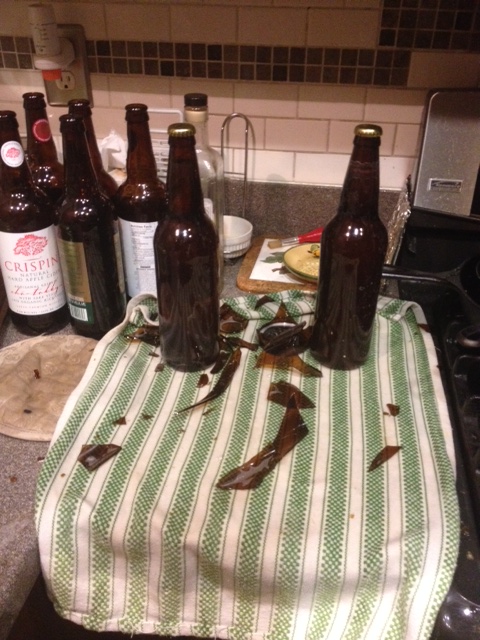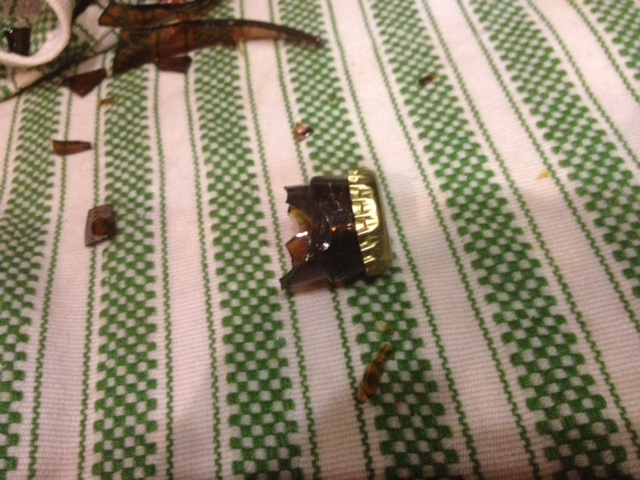Puddlethumper
Well-Known Member
I just finished pasteurizing my first batch of cider. I read and re-read the instructions for "Easy Stove-Top Pasteurizing" and tried to follow them to the letter. Two bottles exploded - one in the kettle with the lid on - one as I was setting it on the drying towel. A shard of broken glass hit me in the cheek and, fortunately, didn't do any harm. Broken glass was scattered in a 10 ft. radius of the explosion. (See pix of countertop below.)
I don't know why this happened when it seems no one else has had this issue. I used a thermometer to check water temp and a timer so the bottles wouldn't stay in longer than 10 minutes. Perhaps my cider was a little more carbonated?
After cleaning up the broken glass so the area was safe to work in, I opted for what I believe was a safer way to proceed. (again see picture below) I placed an open bottle of tap-temperature water with a thermometer in with the bottles to be pasteurized. When the open bottle contents were at 150F I figured the rest of them would be also and pulled them from the pot.
No more broken bottles. No more changes of chonies.
Cheers.



I don't know why this happened when it seems no one else has had this issue. I used a thermometer to check water temp and a timer so the bottles wouldn't stay in longer than 10 minutes. Perhaps my cider was a little more carbonated?
After cleaning up the broken glass so the area was safe to work in, I opted for what I believe was a safer way to proceed. (again see picture below) I placed an open bottle of tap-temperature water with a thermometer in with the bottles to be pasteurized. When the open bottle contents were at 150F I figured the rest of them would be also and pulled them from the pot.
No more broken bottles. No more changes of chonies.
Cheers.









